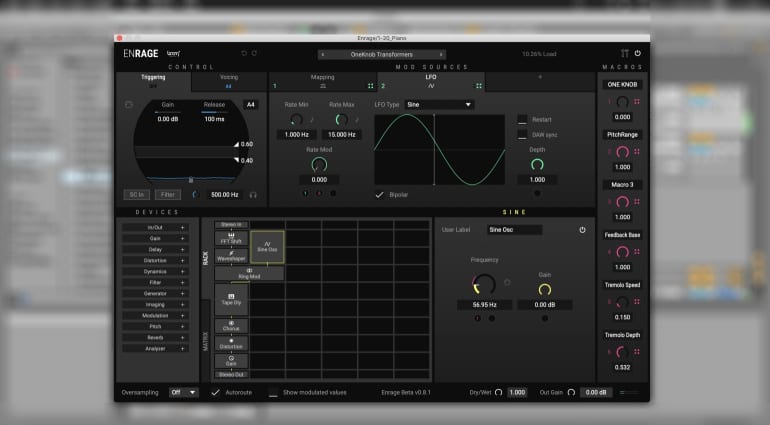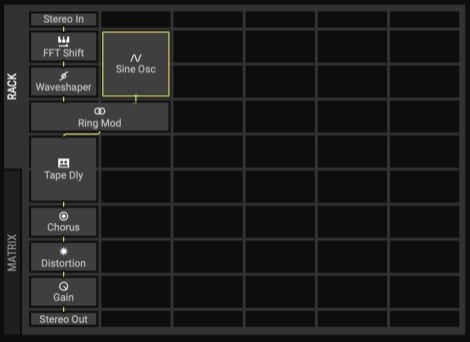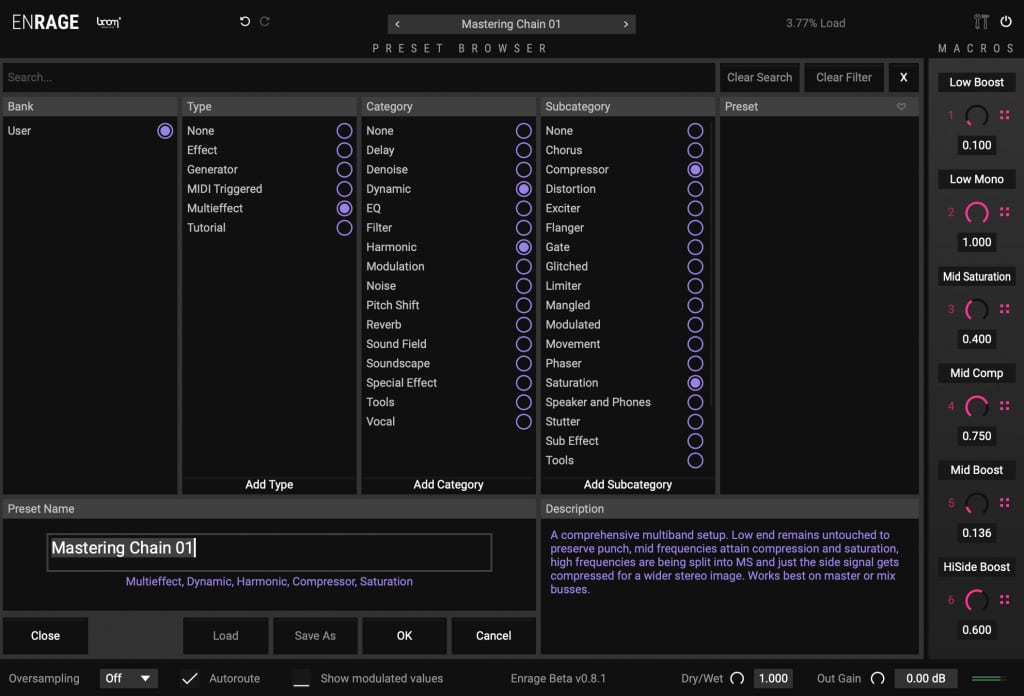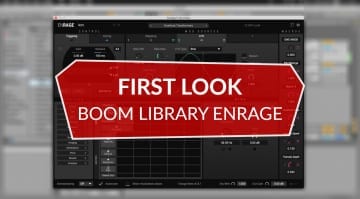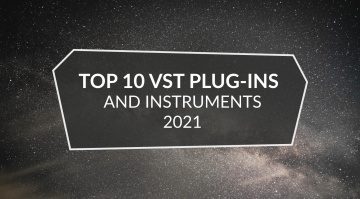Boom Library Enrage review: multi-FX plug-in that needs some taming
Boom Library is among the top dogs in modern sound design. We’re talking the kind of software used in big time cinema and videogames. It’s latest release is Enrage, a modular multi-effects plug-in of the aforementioned caliber.
Although the user interface doesn’t look too intimidating, the level of complexity beneath it stops just short of coding your own stuff in Reaktor. Then again, no one is twisting your elbow towards Enrage’s more occult aspects, such as modulating effects parameters with mathematical formulas. The plug-in is powerful and flexible enough to really be what you want it to be. And if you don’t know what that is, head to the immaculate preset browser for a serving of instant inspiration.
At its core, Enrage makes it possible to stack up to 6 effects in parallel, and up to 8 effects in serial for a total of 14 processors doing potentially outrageous things to your innocent audio. Furthermore, the modulation options are extensive. Feel free to modulate effects parameters while modulating the modulators themselves and triggering some of that action via MIDI or sidechain input.
DAW automation? Not quite
With this amount of liberty, it is very easy to go overboard or lose track of things. To that, the Undo/Redo buttons and two types of overview – Rack and Matrix – prove quite helpful. The latter covers modulation and notably lets you add multipliers to the mod sources for extra zany-ness. Another option is to simply drag and drop modulators onto the parameters which allow it, like in many modern virtual synths.
If you prefer automation curves instead of dialing in modulators, you’ll have to create some macros. Up to 6 of these are available. They can be modulated and are the only parts of Enrage that allow DAW automation.
Charlie’s sound design factory
The scope and depth of Enrage becomes clearer the more you dive into its vast catalog of devices and modulation sources. The devices cover 6 delay types, 4 distortions (including non-linear drive and waveshaping), 2 dynamics processors (gate and compressor), 6 types of frequency filters (such as Splash, which changes the frequency spectrum according to the behaviour of simulated water), 4 audio generators, 7 stereo image processors (they make up the most exhaustive M/S processing suite I’ve seen anywhere), 5 modulation effects, 5 pitch shifters, 2 reverbs, and 4 visual analysers.
Each processor has enough functionality to exist standalone, so we’re not talking abridged versions of studio mainstays. What’s more, the set of stereo processing, metering, routing and gain control tools makes Enrage a potent mastering powerhouse. If anything, it beats any modern DAW’s respectable collection of stock plug-ins out of the water.
Modulation Madness
Moving onto the modulation sources, we get an envelope follower, LFO, Curve, ADSR, Mapping, Transient, Change, Pitch tracker, and Formula. They have very detailed controls and offer quite the interesting possibilities. The envelope follower lets you modulate anything to mimic the behavior of a compressor. Take it into the Change modulator, which analyzes the changes in input data, and you have a fully controllable transient detector circuit. The LFO does everything you’d expect it to do in this day and age, including Random Sample & Hold and bipolar (up/down) behavior.
Curve lets you draw custom curves and trigger them via audio and MIDI. ADSR covers the familiar volume envelopes with some added twists. Mapping maps modulation sources to new values in a custom curve which is then modulated by other mod sources or macros. Transient creates an envelope from the changes in your audio’s dynamics. The pitch tracker tracks the pitch of monophonic signals for use as a modulator, and Formula generates mod values from mathematical expression which you enter yourself.
Powerful features that need some taming
Despite its immense powers, Enrage is accessible enough to act as a medium for random experimentation and happy accidents. But with this many high-quality processors, unorthodox modulators and detailed controls, it really helps to be deliberate. The more you understand what you are actually doing, the better and more sophisticated results you will coax out of Enrage. This is why I feel the plug-in is better suited towards proficient producers and sound designers able to put all its machinations to work.
Price and availability
Enrage is available in VST, AU, and AAX formats for 64-bit Windows and Mac computers. The plug-in is on an introductory sale until April 13 2021, priced EUR 239.20 / USD 279.20. That’s 20% off from the regular EUR 299 / USD 349 price. A 7-day feature unlimited demo version is available from the BOOM Library website.
More information
Video
You are currently viewing a placeholder content from YouTube. To access the actual content, click the button below. Please note that doing so will share data with third-party providers.
